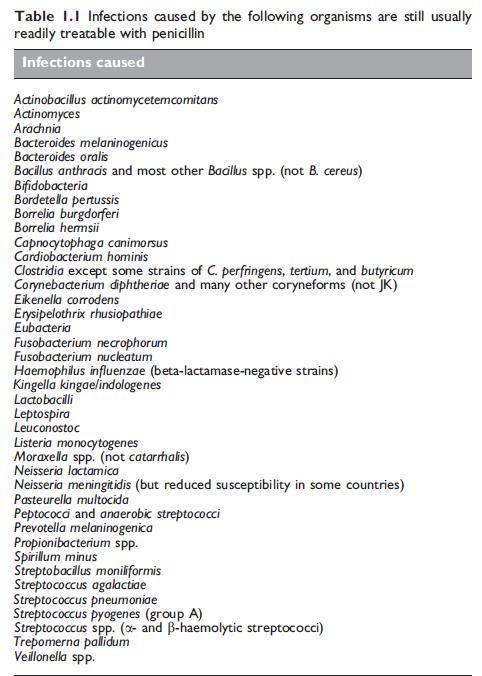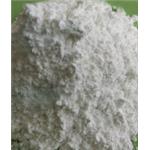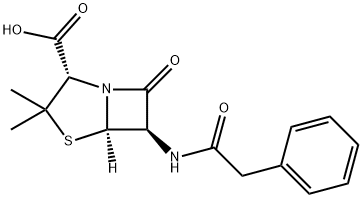Penicillin G: Antimicrobial Activity, Susceptibility, Mechanism of Drug Action, Drug Administration and Dosage etc.
Mar 11,2022
In spite of the availability of many new antibiotics, and the progressive development of resistance in bacterial species, penicillin G (Pen G) remains a very effective agent, although its usefulness is limited by the necessity for parenteral administration (see Table 1.1).
Penicillin was isolated from Penicillium notatum by Fleming in 1928 and introduced into clinical medicine in 1941 by Florey, Chain, and associates (Fleming, 1929; Chain et al., 1940; Abraham, 1980). The history of penicillin is recorded in a number of monographs (Hare, 1970; Bickel, 1972; Bud, 2007).
The penicillin used initially was an amorphous compound containing impurities, which were introduced during the fermentative process; its activity and dosage were expressed in units. Early penicillin was also a mixture of several penicillin compounds, designated F, G, X, and K. Pen G (benzylpenicillin) was the most satisfactory, and this is now used in a purified and crystalline form for clinical purposes.

ANTIMICROBIAL ACTIVITY
Since the introduction of Pen G into clinical use, many organisms which were originally highly susceptible have now developed resistance. Tables 1.2 and 1.3 show the wild-type distribution of MICs for some common bacterial species and their suggested EUCAST in vitro breakpoints.

Non-enterococcal group D streptococci
Unlike the enterococci, these organisms, such as S. bovis, which may cause endocarditis, are nearly always highly sensitive to Pen G (Tuazon et al., 1986). Similar to S. viridans, Pen G acts synergistically with any of the aminoglycosides against nonenterococcal group D streptococci (Moellering et al., 1974).
Leuconostoc and Micrococcus spp.
Leuconostoc species are members of the family Streptococcaceae, and they only rarely cause infections, mainly in compromised hosts. These bacteria are moderately susceptible to Pen G, MICs ranging from 0.25 to 1.0 mg/ml (Handwerger et al., 1990), but frequently vancomycin resistant. Micrococcus is usually Pen G sensitive (Von Eiff et al., 1995). Stomatococcus mucilaginosus (Micrococcus mucilaginosus) rarely causes septicemia in neutropenic patients. Its sensitivity to Pen G is variable, but this organism is always susceptible to vancomycin (McWhinney et al., 1992; Henwick et al., 1993; Tan et al., 1994).
Staphylococcus aureus
Originally this bacterium was very sensitive to Pen G, but the prevalence of Pen G-resistant S. aureus strains in hospitals increased during the period 1942–1958, reaching a value of W70% of all isolates. Resistance was due to the production of beta-lactamases (penicillinases) which rapidly hydrolyze Pen G (Richmond, 1979), and this was mediated by conjugative plasmids (Kaplan and Tenenbaum, 1982).
Gram-positive bacilli
Corynebacterium diphtheriae is consistently sensitive to Pen G. Other corynebacteria vary in sensitivity, and 17 of 24 strains were found to be tolerant (Maple et al., 1994; Hoban and Felmingham, 2002). This may be an explanation for the well-described failure of penicillin to eradicate the carriage state. An amoxicillin-tolerant strain causing endocarditis has also been described (Dupont et al., 1995).
Gram-negative cocci
Neisseria spp.
Neisseria meningitidis was fully susceptible to Pen G for many years but, increasingly, reports of low-level resistant strains are now appearing (see Table 1.5 and below under 2b. Emerging resistance and crossresistance). Neisseria meningitidis is occasionally isolated from the genitourinary tract and/or anal canal of patients tested for gonorrhoea (William et al., 1979), so it is possible that plasmids can be transferred from gonococci to meningococci in vivo.
Anaerobic Gram-negative cocci
Gram-negative anaerobic cocci such as Veillonella spp. were usually sensitive to Pen G (Sutter and Finegold, 1976) but resistance is now described (Reig et al., 1997), usually in the absence of beta-lactamase production, and may be quite common (Nyfors et al., 2003).
MECHANISM OF DRUG ACTION
Pen G and other beta-lactam antibiotics interfere with biosynthesis of the bacterial cell wall, and this eventually causes lysis and death. It was thought that Pen G selectively inhibited a Pen G-sensitive enzyme, transpeptidase, which is involved in transpeptidation- i.e. assembly of an intact, insoluble protective peptidoglycan in the bacterial cell wall (Shockman et al., 1979). Bacteria with weak cell walls were produced, which then ruptured under the mechanical pressure of normally increasing cytoplasmic mass. It is now realized that the set of events is much more complex, involving both distinct Pen G-sensitive PBP targets and enzymatic and physiologic processes inhibited by beta-lactam antibiotics, which vary widely depending on their structure and the type of bacterial species (Tipper 1979; Tomasz, 1979). Inhibition of bacterial growth seems to be elicited by direct interaction of beta-lactam antibiotics with their PBPs; subsequent bactericidal or lytic effects are triggered by these initial reactions (Ogawara, 1981).
Pen G may also inhibit RNA and thereby protein synthesis, as well as peptidoglycan synthesis, in Pen G-tolerant S. mutans strains (Mychajlonka et al., 1980; Mychajlonka, 1981). That Pen G-tolerant S. sanguis strains can be made to respond to Pen G in a manner similar to nontolerant strains (which possess autolysins) by addition of heterologous autolysins to the growth medium raises the possibility that Pen G may act synergistically with various host enzymes during infections (Horne and Tomasz, 1980). In vitro, differing morphologic changes may be induced when bacteria are exposed to beta-lactam antibiotics in varying concentrations.
MODE OF DRUG ADMINISTRATION AND DOSAGE
Penicillin G is destroyed by acid in the stomach, and absorption after oral administration is variable. All Pen G preparations can be injected i.m., and its two highly soluble salts (see above under 1. Description) can also be given i.v.
Crystalline Pen G
The usual route of administration is by intravenous injection. However, i.m. administration may be preferable in some circumstances, and for patients undergoing continuous ambulatory peritoneal dialysis (CAPD), Pen G can be administered via the intraperitoneal route in the dialysate. Crystalline Pen G is available as either the sodium or potassium salt of Pen G, with vials of 0.3, 0.6, 1.2, 3.0, and 6 g available. Recommended doses of Pen G (benzylpenicillin) are summarized in Table 1.7.

Crystalline Pen G is usually administered every 4–6 hours, but intervals of 2–3 hours between doses may be necessary in severe infections. A common adult dosage is 0.6 g i.m. or i.v. every 4–6 hours. For serious infections (e.g. bacterial meningitis) higher doses can be given; a common dosage for adults is 1.2–1.8 g 4-hourly. Doses higher than this are usually unnecessary for infections, however severe, caused by Pen G-sensitive organisms, although one exception is neurosyphilis, in which doses up to 2.4 g i.v. 4-hourly may be needed. Crystalline Pen G may be administered i.v. either by continuous infusion or by intermittent injections or infusions. In emergency treatment of serious infections, an initial bolus injection of Pen G should be given i.v. to achieve a high serum level quickly.
Procaine Pen G
Aqueous suspension of procaine penicillin for i.m. administration is available in disposable syringes, each containing 1.0 or 1.5 g of procaine penicillin. During the later stages of treatment of many infections such as pneumonia, procaine Pen G can be substituted for crystalline Pen G. This penicillin is useful because absorption of an i.m.-injected dose continues for up to 24 hours, so that injections may be separated by this interval, but lower serum levels are obtained. These injections are less painful than injections of crystalline Pen G. A common adult dosage for procaine Pen G is 1.0 g i.m. once or twice a day. In milder infections procaine Pen G may be satisfactory for initial treatment. This compound must never be given intravenously.
Benzathine Pen G
Benzathine penicillin is available in suspension containing 450 mg/ml for i.m. administration. In addition, vials of a mixture containing benzathine penicillin 450 mg, procaine penicillin 300 mg, and potassium penicillin G 187 mg are available for i.m. use. Benzathine Pen G, when injected i.m. in doses of 600,000–1,200,000 units (0.45– 0.9 g), maintains a low serum concentration of Pen G for a period of 1–3 weeks. Single injections of benzathine Pen G have been used for treatment of S. pyogenes infections (Ginsburg et al., 1982), diphtheria carriers (McCloskey et al., 1974), and syphilis (McCracken, 1974), whereas monthly injections are used for rheumatic fever prophylaxis (see below under 7. Clinical uses of the drug). This compound must never be given intravenously.
TOXICITY
Pen G is of very low toxicity to humans, but when ‘massive doses’ of 60 g daily or more are given i.v., encephalopathy with drowsiness, hyperreflexia, myoclonic twitches, convulsions, and coma may result (Nicholls, 1980; Snavely and Hodges, 1984). These very high doses of Pen G are rarely indicated nowadays. Toxicity is more likely to occur in patients with impaired renal function and in the elderly (Manian et al., 1990). In one patient who developed convulsions, the serum Pen G concentration was 433 mg/ml 2 hours after i.v. administration of 6 g (Weinstein et al., 1964). CSF Pen G levels appear to be more important than serum levels; there is little danger of convulsions unless CSF Pen G levels exceed 5 mg/ml (Lerner et al., 1967). More recent animal studies have shown that the brain tissue concentrations, rather than CSF concentrations, of Pen G are decisive for neurotoxicity (Schliamser et al., 1988a; Schliamser et al., 1988b; Schliamser et al., 1989; Schliamser et al., 1991).
- Related articles
- Related Qustion
- Clinical Uses of Penicillin G Mar 11, 2022
Pen G remains a very effective treatment for infections caused by group A beta-hemolytic streptococci (which have not, to date, developed resistance to penicillin), such as pharyngitis, scarlet fever, cellulitis, necrotizing fasciitis.
Laccase belongs to the blue multicopper oxidases and participates in cross-linking of monomers, degradation of polymers, and ring cleavage of aromatic compounds. It is widely distributed in higher plants and fungi.....
Mar 11,2022Food AdditivesPen G remains a very effective treatment for infections caused by group A beta-hemolytic streptococci (which have not, to date, developed resistance to penicillin), such as pharyngitis, scarlet fever, cellulitis, necrotizing fasciitis.....
Mar 11,2022APIPenicillin G
61-33-6You may like
- benzylpenicillin
-

- $10.00 / 1kg
- 2024-01-08
- CAS:61-33-6
- Min. Order: 1kg
- Purity: 99.60%
- Supply Ability: 50tons
- Penicillin G
-

- $0.00 / 100g
- 2023-09-14
- CAS:61-33-6
- Min. Order: 100g
- Purity: 99%
- Supply Ability: 20 tons
- Penicillin G
-

- $0.00 / 25kg
- 2023-04-20
- CAS:61-33-6
- Min. Order: 25kg
- Purity: 99%
- Supply Ability: 1000mt




